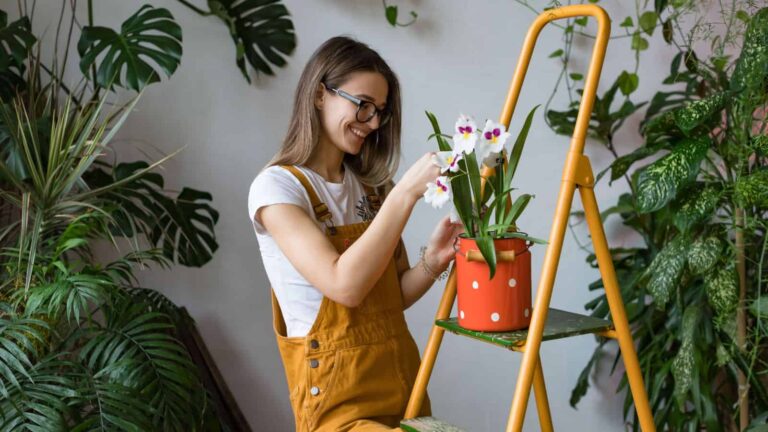Winter can be tough on plants, with lower temperatures and less sunlight making it harder for them to thrive. But with a few smart strategies, you can help your indoor and outdoor plants survive the colder months. Here are five practical hacks to keep your plants alive and healthy through winter.
1. Adjust Your Watering Routine
In winter, plants go into a period of slower growth, which means they need less water than during the warmer months. Overwatering can lead to root rot, especially when the soil takes longer to dry out in cooler temperatures. Check the soil moisture before watering by sticking your finger a few inches into the soil. If it still feels moist, hold off on watering for a few more days. Use room-temperature water to avoid shocking the roots, and try to water in the morning so the soil has time to dry out during the day.
2. Increase Humidity Levels
Indoor heating systems can make the air dry, which isn’t ideal for many plants, especially tropical varieties. To combat this, increase humidity levels around your plants. You can use a humidifier in the room where your plants are located or place a tray filled with water and pebbles near your plants to create a more humid microclimate. Grouping plants together can also help retain moisture, as the natural humidity released from their leaves benefits all the plants in the cluster.
3. Move Plants to Brighter Spots
With shorter days and weaker sunlight, it’s important to maximize the light exposure your plants receive during winter. Move your plants closer to windows where they can get more natural light, but keep them away from cold drafts. South-facing windows are ideal if you’re in the northern hemisphere, as they receive the most sunlight throughout the day. Clean your windows regularly to allow as much light as possible to reach your plants, and consider using grow lights if natural light is limited.
4. Keep an Eye on Temperature
Sudden temperature changes can stress your plants, so try to keep them in a stable temperature range. Avoid placing plants near radiators, vents, or drafty windows, as these spots can be too hot or too cold. Ideally, most houseplants do well in temperatures between 15°C to 24°C (60°F to 75°F). For outdoor plants, consider using frost covers or cloches to protect them during particularly cold nights. Mulching outdoor plants can also help insulate the soil and protect the roots from freezing.
5. Dust Your Plants’ Leaves
During winter, dust can accumulate on your plants’ leaves, blocking what little sunlight they receive. This makes it harder for them to photosynthesize and grow. To keep them healthy, gently wipe down the leaves with a damp cloth every couple of weeks. This simple step helps them absorb more light and keeps their leaves looking fresh. Be sure to use a soft cloth to avoid damaging the leaves, and be gentle with plants that have more delicate foliage.
If you enjoyed this post, please give Candid Joy a follow on MSN.

